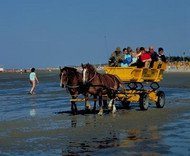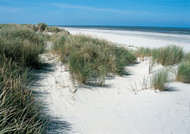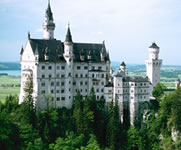
In Germany's largest North Sea spa resort of Cuxhaven, on the southern North Sea coast where the Elbe and Weser meet the sea, ships and harbours have a long tradition. The coastal region, with the largest continuous stretch of tidal mud flats, is part of the Lower Saxony Wattenmeer national park. It provides a unique habitat. This region stands alongside the high mountain ranges as one of Europe's last unspoilt natural landscapes. Coastal mudflats, marshland, sandy heathland and peaty moorland, woodland and heath all form part of this region's varied landscape.
Large parts of the town of Cuxhaven lie below sea level, so dikes are used to protect people's lives from the waters of the North Sea, which comes and goes with the changing tides. The ebb and flow of these tides is mainly due to the moon's influence in the Earth's oceans. In a 24-hour period, the Earth turns once on its axis. The Moon circles the earth in the same direction once every 28 days or so. Approximately 24 hours and 50 minutes pass until a point on the Earth such as Cuxhaven has returned to the same position directly underneath the Moon. So the tide comes in and goes out around 50 minutes later every day in the same place. Thus a tide, or the time between high and low water, lasts around twelve hours and twenty-five minutes.

In Cuxhaven-Sahlenburg, dunescapes formed during the ice age vary between flattish and steepish sand dunes before giving way to salt marshes and coastal mudflats. Salt marshes often form between coastal mudflats and land, and this is a particular feature of the Cuxhaven region. These marshes are regularly flooded by the sea, so the plants and animals found here have adapted to the extreme conditions.
Among the culinary salt meadow specialities valued by the gourmet, but only available in season, are samphire and lamb that is "pre-salted" by its choice of grazing meadow. In summer, the salt meadows are a breeding ground for seabirds. The landscapes behind the dikes are equally varied. Sandy dunes, lush marshland, blooming heathland and reed-filled marshes provide an astonishing variety of habitats.
 Skip to content
Skip to navigation
Skip to subnavigation
Skip to search
Skip to content
Skip to navigation
Skip to subnavigation
Skip to search






